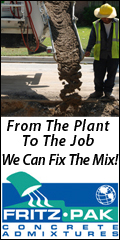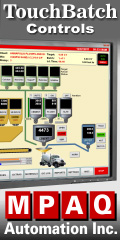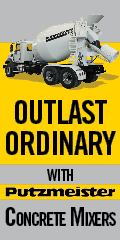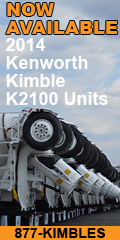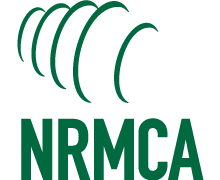
| Archive | nrmca.org | E-Store | Conferences & Events | Certifications | InFocus | Membership Directory |
NRMCA Attends, Reports on ASTM Meeting The following is a summary of actions at the ASTM meeting of Committees C09 on Concrete attended by NRMCA staff earlier this month in Indianapolis.
C09.20 Concrete Aggregates - A proposed revision to specifically include reference to recycled aggregate in Specification ASTM C33 received some negative votes and will be revisited. Revisions were in process for C88 on soundness. The method will require an automated temperature measuring device for the test. A task group working on a specification for mineral fillers for use in concrete balloted a revised version and received several negatives that are being considered for revised version for a future ballot. This specification will support the use of mineral fillers in concrete, which may be used in self-consolidating concrete or for other purposes. A new rapid (5 minute) test method to determine the methylene blue index (MBI) of aggregate was balloted at main committee ballot and resolutions to negative votes will result in a revised version for another ballot. The test is a colorimetric method and is considered simpler, more accurate and less subjective than an existing AASHTO method. The purpose of the test is to identify the presence of active clay minerals in aggregates or in mineral fillers.
C09.24 Supplementary Cementitious Materials - On ASTM C618 – Specification for Fly Ash, revisions are being developed for the following – not using the autoclave test requirement for Class F fly ash, measurement and reporting of Blaine fineness, eliminating the composition based differentiation between Class C and Class F but requiring that the fly ash chemistry be reported. Various processing and co-combustion additions in fly ash manufacturing will be considered for incorporation in C618. ACAA will survey its members on typical additions in power plants. A new specification for alternative SCMs that will be qualified using the C1709 guide is being planned.
C09.26 Chemical Reactions - The subcommittee is evaluating whether the C1293 test method variability will justify reporting to the nearest 0.001%. Some subcommittee members feel it should be to the nearest 0.01% as required in C1567. New business items planned include:
1. introduction of "as is" aggregate grading option in C1260, C1293 and C1567 tests; 2. permitting the use of C595 and C1157 cements in C1293 and C1567; 3. modifications to C1567 to evaluate the effectiveness of lithium admixtures based on Corps of Engineers' standard CRD C662; 4. changing the precisions statement for the ASR tests to include language of range between the three prisms averaged for a test result; and 5. eliminating the requirement to place test specimens in a moist room for 16h prior to the reading for C1293. C09.40 Ready Mixed Concrete - Two significant revisions to ASTM C94 were approved: 1. the limit on 300 revolutions to the end of discharge has been removed. The purchaser has the option to state a limit or the manufacturers sets a limit on revolution based on their considerations to control the quality of concrete; 2. A revision to Section 19 that addresses a resolution process in case of low strength tests was revised to remove the suggestion of arbitration by a three member panel. The revision suggests that the purchaser and manufacturer confer to arrive at an agreement to establish adjustments to mixture proportions, production processes or testing procedures. The subcommittee continues to work on other revisions to C94 to include: revisions to the scope of the document; changes to the air content table, several revisions to the section on batching concrete, revisions to the annex on mixing uniformity and on the appendix for strength overdesign.
A new specification addressing the reuse of fresh returned concrete was balloted at the subcommittee level and received several negatives that were constructive and will be considered in a revision for a reissue of a subcommittee ballot.
C09.49 Pervious Concrete - A proposal to use the Marshall hammer instead of proctor hammer to consolidate ASTM C1688 specimens for fresh density has been withdrawn. A new ballot on C1701 Field infiltration rate will be created to clarify testing twice at a given location on the same day. A new ISO standard is being developed that is a lab infiltration rate test.
C09.50 Risk Management for Alkali Aggregate Reactions (AAR) - The new practice "Determining Reactivity of Concrete Aggregates and Minimizing Risk of Deleterious Expansion" has been balloted in the main committee and drew 11 negatives. Some of those were considered. The issue of providing a specification limit to the nearest 0.01% or 0.001% for C1293 was again discussed.
C09.60 Fresh Concrete Tests - ASTM C172 is being revised to include sampling from volumetric mixers. A revised flowchart is being proposed for the rollometer air content test in C173. The subcommittee is planning a new inter-laboratory study to develop a precision statement for the pressure air method, C231. It is unclear whether AASHTO will drop the method for the measurement of water content of fresh concrete using the microwave oven, AASHTO T318, or if it will accept revisions developed by the ASTM subcommittee. The primary revisions was to provide a realistic precision statement and to account for aggregate absorption in the measured water content.
C09.61 Strength - A proposed revision to reuse the portion of the sample used for the slump test in C31 received several negatives and was rejected. To do the same in the lab in C192 was considered more acceptable. FHWA has performed research on a smaller beam specimen for flexural strength tests and revisions will be made to C31, C78 and C293 to accommodate this size.
C09.66 Fluid Penetration - This subcommittee is involved in developing three new test methods:
1. One-point bulk water sorption of dried concrete (main); 2. Surface resistivity using Wenner probe (sub); and 3. mass loss vs. time for one-dimensional drying of saturated concrete. The subcommittee reviewed several negatives and will reissue revised versions of these standards for future ballots. More recent data from an inter-laboratory study was reviewed and might be used to revise the precision statement of ASTM C1202 – the rapid chloride permeability test. No significant improvement in the precision compared to that in the current standard is evident from the new data. C09.67 Resistance to Environment - The subcommittee discussed potential changes to ASTM C666 and C1646 as well as a new salt scaling test. Ballot items are expected before the next meeting.
Workshop - A planned workshop on Product Category Rules (PCR) for the development of Environmental Product Declarations (EPD) for concrete was cancelled and postponed to December.
Awards - Ara Jeknavorian with Grace Construction Products was presented the Award of Merit, ASTM’s highest honor; Doug Hooton, University of Toronto, was presented the Frank E. Richart award; Karthik Obla received an award of appreciation for his service as chair of Subcommittee C09.49 on Pervious Concrete.
For more information, contact NRMCA's Colin Lobo at clobo@nrmca.org or Karthik Obla at kobla@nrmca.org. |
|
|
